On a hillside overlooking Windermere is a spectacular house. That in itself is not surprising, as in the 19th and early 20th Centuries wealthy business owners from the north west of England flocked to the Lake District and built comfortable homes for their families – retreats from the noise, soot and pollution of the industrial cities. But Blackwell, the house we’re exploring today, is quite remarkable – within its Grade I listed walls is an exceptionally-preserved Arts and Crafts interior.
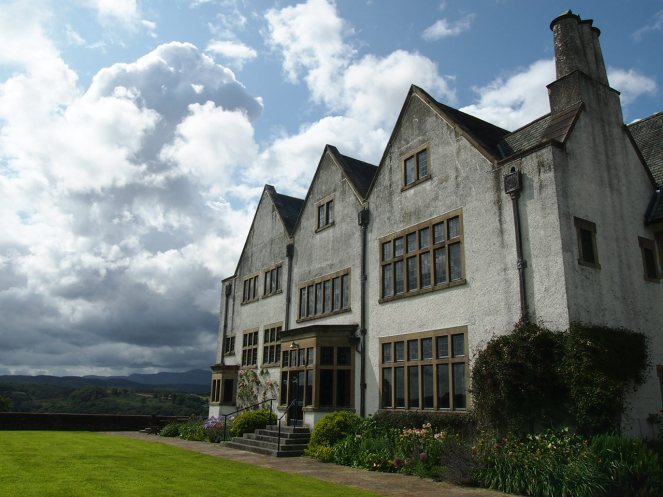
Blackwell was built for the wealthy Holt family of Manchester, who had made their money through brewing (Holt’s beers are still being made today). The head of the family, Sir Edward Holt, commissioned the respected architect Mackay Hugh Baillie Scott to build the family a luxurious country retreat on a hillside overlooking the picturesque waters of Windermere.
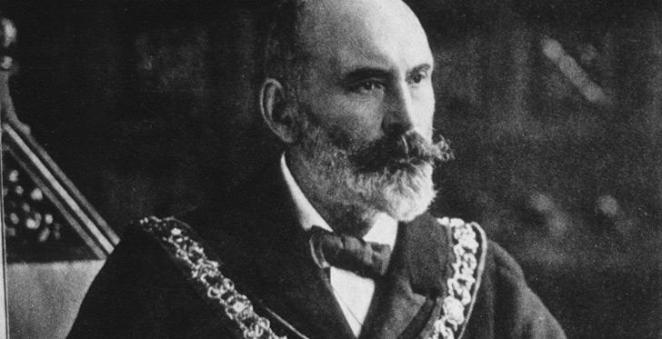
Mackay Hugh Baillie Scott, Blackwell’s architect, was an important figure in the Arts and Crafts movement. The Arts and Crafts movement was first conceived in the 1880s, driven by the ideals of John Ruskin and William Morris. It came about as a reaction to industrialisation and the mechanised forms of mass production that created a division of labour and, Ruskin argued, depersonalised the manufacturing process. Morris was by the 1880s a successful designer and he set about starting a movement that sought to return to idealised medieval roots, with an emphasis on high quality craftsmanship, traditional materials and methods and a focus on design as well as utility. Morris’ ideas soon caught on and many small manufacturers joined guilds and societies devoted to the ideals of the Arts and Crafts movement.
Baillie Scott was younger than Morris and Ruskin and therefore he was something of a latecomer to the Arts and Crafts movement. He qualified as an architect in 1885, and set up his own practice in the 1890s. The buildings he designed incorporated the principles of the Arts and Crafts movement, with great attention to detail on both interiors and exteriors. In 1894 he published plans for a hypothetical “ideal house” and it was this that brought him to the attention of many people who later commissioned him to build homes for them. The fact that Blackwell was intended to be the Holt family’s summer home, rather than a permanent year-round residence, allowed Baillie Scott to take a more experimental approach to the house’s design. The fireplaces, for example, could be designed as focal points for the room, rather than practical items that had to keep the house warm during the cold Cumbria winter.
Like so many Arts and Crafts houses, Blackwell has an asymmetrical design. Some elements of the house reflect local building traditions, such as the distinctive round chimney stacks which are of a design seen in many older houses in the Lake District.

The initials of Edward Holt can be seen at the top of the beautifully detailed lead drainpipes.
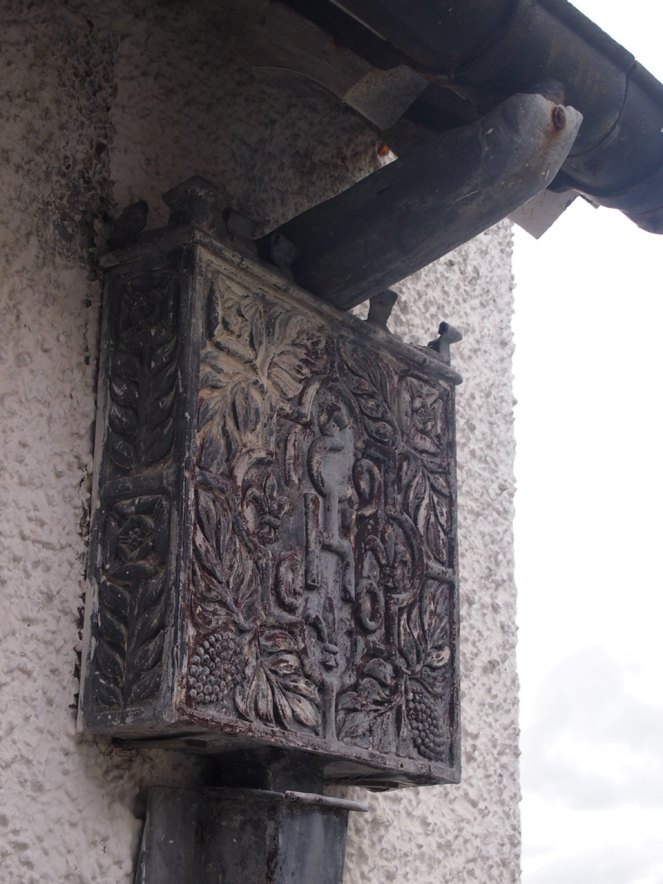
The Main Hall, the first room that visitors today encounter, is in essence a living area inspired by the great halls of the medieval period – a room where the family and their visitors could relax and be entertained. The ceiling is beamed and there are many intricately carved wooden panels. Some of the panels on the walls are antique, and were sourced from a 17th Century church in Cumbria.
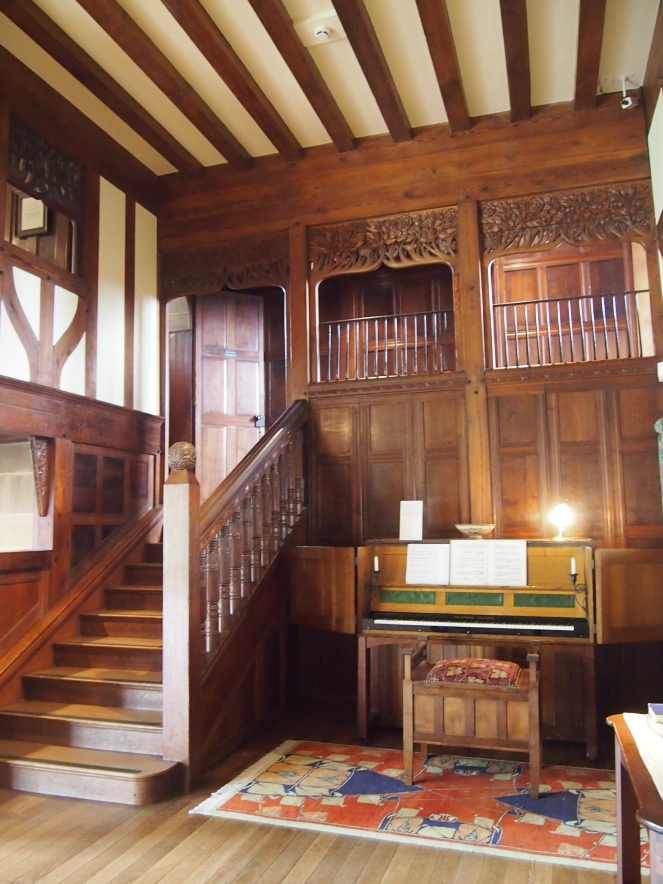
Part of the room has a double height ceiling, which contrasts with the snug alcoves and window seats.
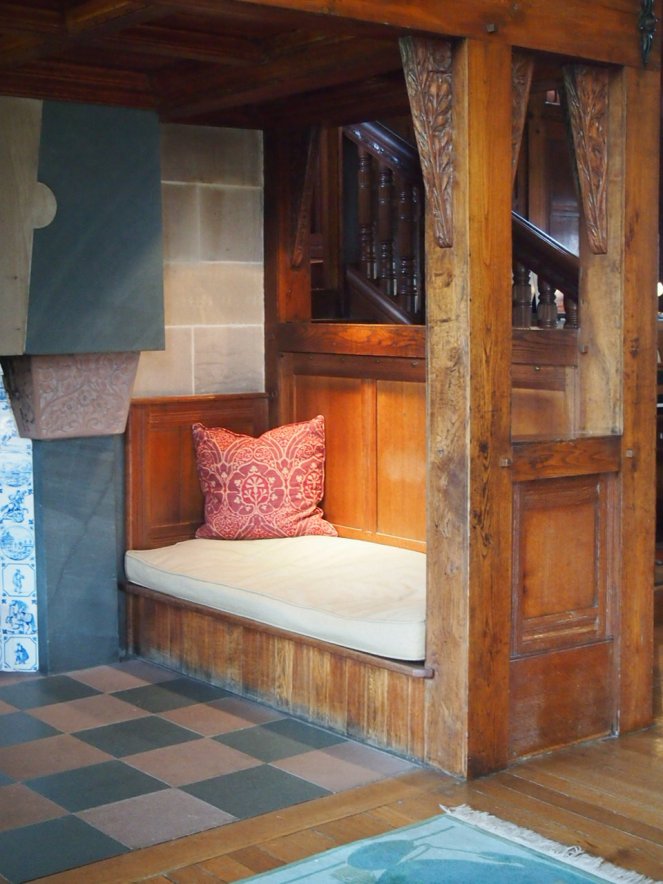
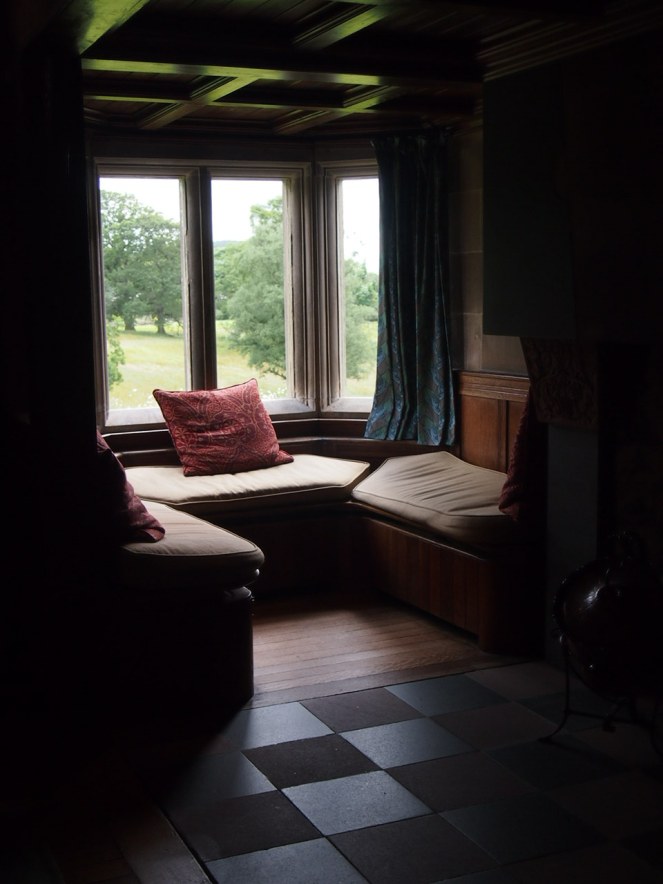
The area of the main hall with the lower ceiling has some wonderful beaten copper lights that would originally have hung over a billiard table. The copper light fittings were rediscovered by accident during the house’s restoration.
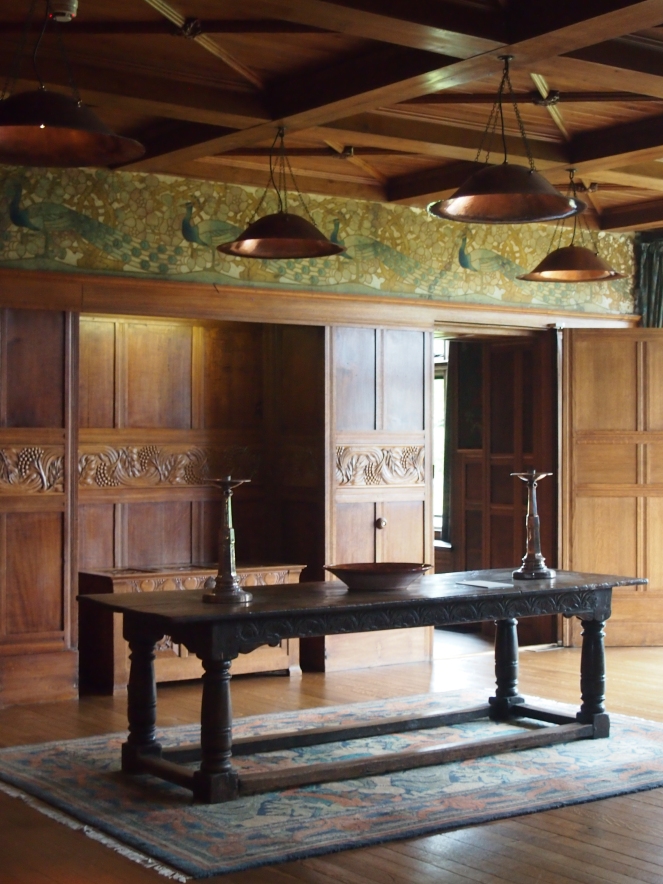
Another alcove with comfortable seating overlooks where the billiard table would have been. The beautiful peacock frieze at the top of the wall is actually wallpaper.

A beautiful 18th Century fire grate can be found in the dining room, adjacent to the main hall. The fireplace itself is decorated with beautiful original Delft tiles.
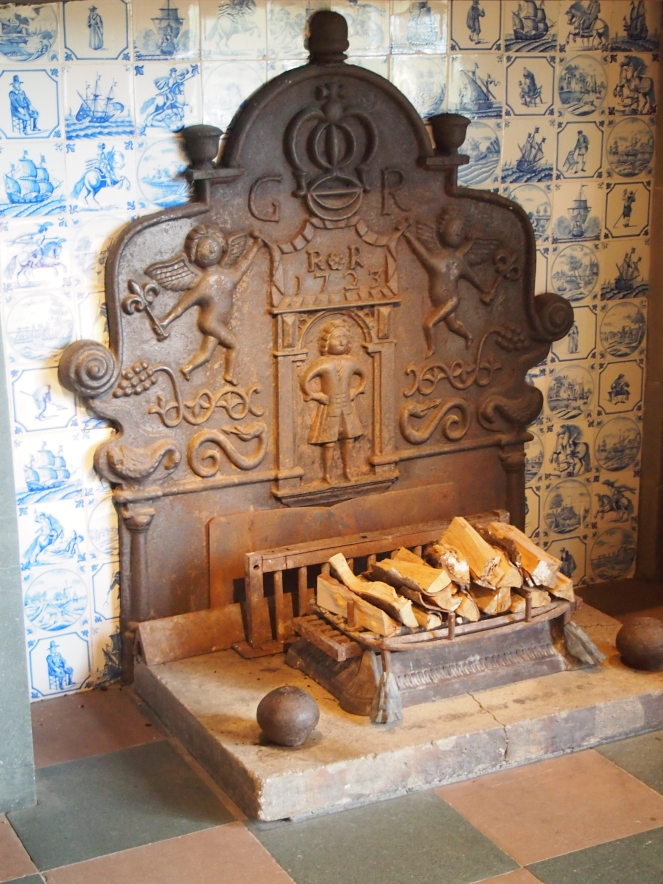
The serene white parlour is a huge contrast to the dark wood of the other downstairs rooms. Elegantly-carved wood pillars complement the fitted shelves and seats by the fireplace.


Large windows let in plenty of light and afford wonderful views over Windermere and the Cumbrian mountains.
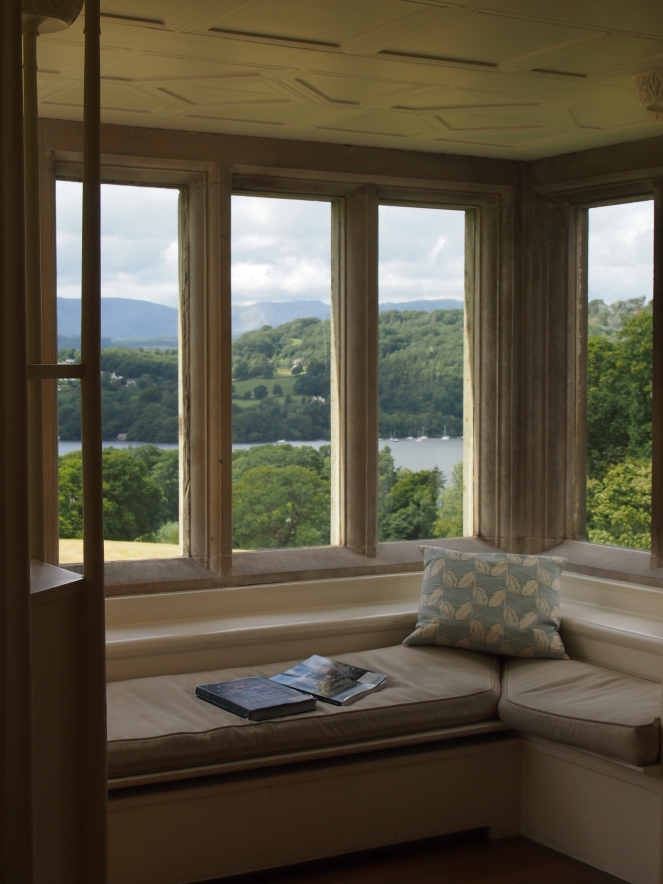
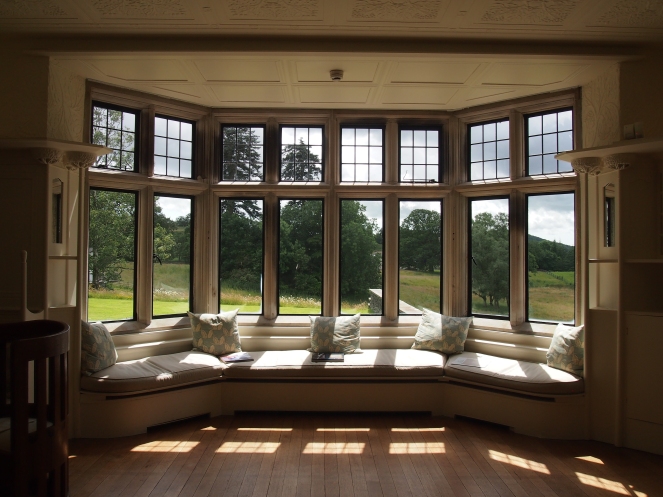
The remarkable survival of the interior features at Blackwell is in part due to a tragedy that overshadowed the Holt family. Their eldest son was killed in the First World War and following his death, the family spent very little time at Blackwell. Perhaps, in their grief, they felt unable to return to a place where they had spent many family holidays with their son.

The Holt family did not sell the house, but maintained a small team of staff there and let the building out to tenants. During the Second World War, like so many other big country houses, Blackwell was home to a school that had been evacuated from an urban area threatened by air raids. The girls of Huyton College, originally based in Liverpool, are said to have enjoyed their time at Blackwell, and after the war the house continued to be used as a prep school for girls.
![Fittingly, this bedroom was home to an exhibition on the [] story "The Yellow Wallpaper" when I visited Blackwell](https://flickeringlamps.com/wp-content/uploads/2015/09/p1013029.jpg?w=663&h=884)
Fortunately for visitors today, during Blackwell’s time as a school and then offices, the precious Arts and Crafts interiors were hidden behind false walls and filing cabinets, and the fireplaces were boarded up, all of which helped to preserve the delicate wallpapers and carvings. Historic England (formerly English Heritage) describes Blackwell as having an “outstandingly important” interior, and the building was designated Grade I listed in 1969.

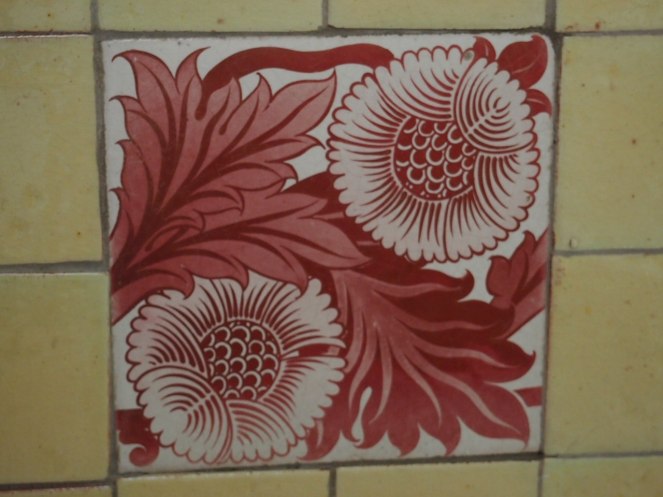
Blackwell was acquired by the Lakeland Arts Trust in 1999, after the building had been used as offices for a number of years. The Trust raised money to restore the house to its original glory, and it was opened to the public in 2001. Many of the surviving Baillie Scott-designed homes are in private hands, and his archives were destroyed during an air raid in 1941, so opening Blackwell – one of his finest works – to the public gave Lakeland Arts a unique opportunity to celebrate the work of Baillie Scott, and other artists and designers associated with the Arts and Crafts movement.
The furniture seen at Blackwell today, however, is not what would have been there when the Holt family used the house. Instead, the Lakeland Arts Trust have purchased many fine piece of Arts and Crafts furniture that complements the architectural style of the house. Some of this furniture was designed by Baillie Scott himself, while other pieces were made by other Arts and Crafts manufacturers such as Morris and co and Stanley Webb Davies.
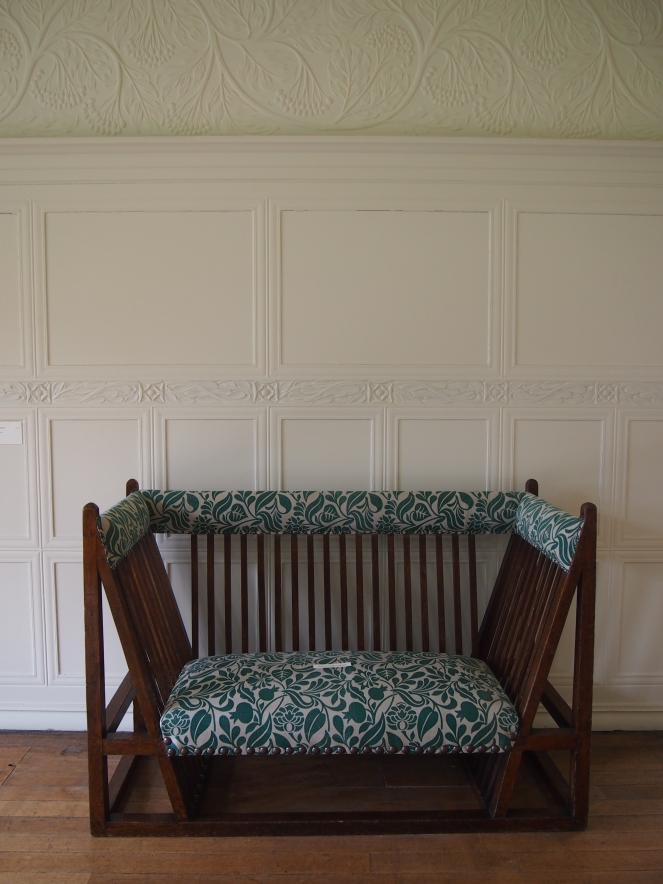
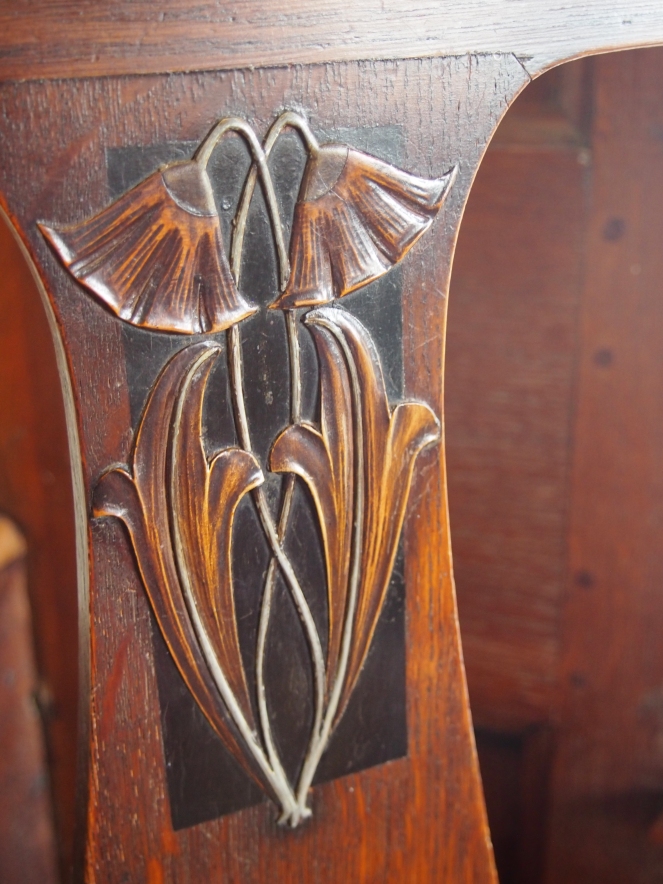
Although the Arts and Crafts movement hearkened back to (an admittedly rather idealised) past celebrating individual craftspeople, the way that Arts and Crafts buildings, furniture and decorative items were designed and manufactured meant that the style was only ever affordable to the very wealthy. Therefore, Arts and Crafts homes and interiors, particularly those surviving with original fittings, are few and far between. It’s for this reason that Blackwell and its stunning interior is so precious. Everything at Blackwell is beautifully designed and executed, right down to the delicate wallpapers that have survived for over a century. It’s the kind of house that visitors ought to take time exploring, in order to appreciate the attention to detail that has gone into even the most everyday of items and fittings. Books about different designers involved in the Arts and Crafts movement are provided in the house and visitors can peruse these while sitting in the comfortable window seats. Blackwell is a truly beautiful place and an essential visit for anyone interested in the Arts and Crafts movement.
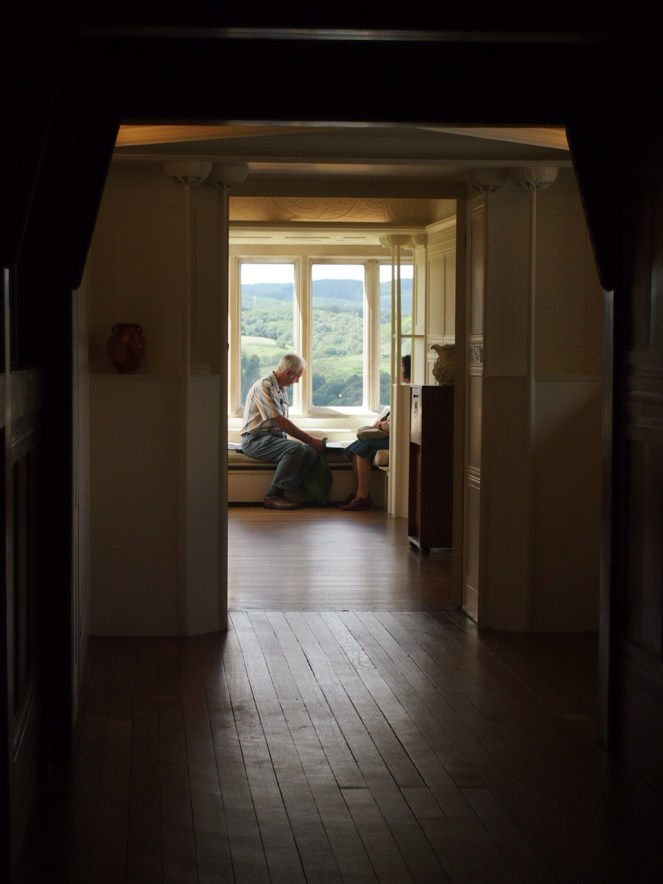
Information about visiting Blackwell can be found here.
References and further reading
Blackwell – The Arts and Crafts House https://www.blackwell.org.uk/blackwell-today
List entry for Blackwell – Historic England http://list.historicengland.org.uk/resultsingle.aspx?uid=1124680
The Arts and Crafts Movement – Victoria and Albert Museum http://www.vam.ac.uk/content/articles/t/the-arts-and-crafts-movement/
Baillie Scott: late master of the Arts and Crafts movement – Beautiful Wood blog http://www.beautifulwood.co.uk/blog/baillie-scott-late-master-of-the-arts-and-crafts-movement.html


Stunning is the word. It’s glorious!
LikeLike
Thank you!
LikeLike
A really beautiful home – it looks as though it was peaceful too. Thank you.
LikeLike
Thank you! It did feel very peaceful inside. It was lovely and spacious and the white parlour in particular felt very serene.
LikeLike
This home is outstanding, and I very much wish I could see it. Here in the US, Arts and Crafts style arrived belatedly, becoming popular only in the early years of the 1900s and through to the end of the 1920s. Behind the times, as usual…. Many thanks for posting!
LikeLike
Thank you! I’m glad you enjoyed the post.
LikeLike
What an interesting place – I love the parlour especially, with the fireplace and that beautiful chair.
LikeLike
That was my favourite room too!
LikeLiked by 1 person
True beauty and lovingly crafted- you can’t beat the A&C crafts people
LikeLike
I agree – the work that went into everything they made was quite spectacular.
LikeLike
I have just come across this write up on Blackwell – love the write up and love the building/ground – went to school there in the early 70s. Fond memories.
LikeLike